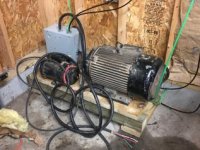MetalArtistCandy
Aluminum
- Joined
- Jun 1, 2017
I am building a phase converter. The 20hp motor I purchase has wiring connected with botls, and they used a ton of electrical tale for insulation. I plan to change this from 480v to the 240v as well.
Curious as to other options for crimping the wires together. I did buy some crimp terminals. But I am not sure what crimpers I can use with them. Or if the crimper I have will work.
Curious as to other options for crimping the wires together. I did buy some crimp terminals. But I am not sure what crimpers I can use with them. Or if the crimper I have will work.



